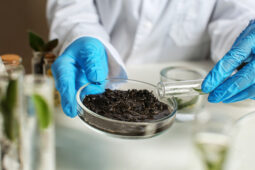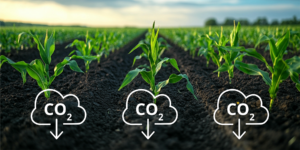Food consumption patterns change often for people all over the world. It’s never been easier for consumers to purchase packaged seafood products thanks to the expansion of retail markets and product availability through numerous sales channels and the ability to provide high-quality and disease-free fish by growing them in an environment that meets hygiene standards. Moreover, the aquaculture industry is responsible in part for conserving species that are potentially going extinct. The increasing cost of feed, environmental compliance challenges and restrictions on usage of some chemical and medicinal aids that have traditionally been used in the industry remain a liability for the global aquaculture market. However, as the world’s population and the popularity of protein-rich diets grow, the global aquaculture market is expected to thrive.
In the past, aquaculture development and management focused on siting, licensing and monitoring at the farm level, but aquaculture also relies on public resources like water and space. Aquaculture farms are ingrained in their surrounding ecosystems. Although a farm may be operating at its highest level, neighboring farms or industries that have poor environmental practices or biosecurity pose a significant risk.
Improving Aquaculture Production
According to the United Nation’s Food and Agriculture Organization, 43% of all fish consumed in the world comes from aquaculture. In order to maintain current consumption levels, the aquaculture industry will have to increase production by 27 million tons by the year 2030. Thankfully there are new technologies available that use microorganisms to help improve water quality and improve feed digestion for fish and shrimp, which help producers keep up with increasing demand for seafood in ways that are easy, safe, sustainable and profitable.
Risk Management for the Profitable Farm
Considering the benefits and risks of aquaculture will aid in aquaculture producers’ pursuit of a profitable farm. It’s impossible to eliminate all risk from aquaculture or agriculture, which means it’s important to minimize the impact risks may have on the financial stability of the business.
Benefits of Aquaculture
Aquaculture is beneficial in the following ways:
- Source of sustenance—Supporters of aquaculture hypothesize that fish farming is an effective solution to meet demand for seafood. According to the Global Seafood Market Report, amid the Covid-19 crisis the global market for seafood is estimated to rise from $113.2 Billion in 2020 to $138.7 Billion by 2027.
- Source of income and profitability—Aquaculture is a near $25 billion industry. More than 30% of all seafood consumed per year is farmed. According to the Food and Agriculture Organization of the United Nations, the aquaculture industry is growing at three times the rate of land-based animal agriculture. Fish farming is likely to continue to grow in popularity as natural fishing is maximized.
- Aquaculture Anywhere—Fish farms can essentially be established wherever there is access to water, feed components and a favorable climate. In the case of marine aquaculture, tanks can be built and placed on the seafloor or left hanging in columns. For freshwater aquaculture, tanks and cages can simultaneously be erected either on land or in lakes, rivers and artificial ponds.
- Avoiding Waste Issues—Proponents of aquaculture cite that recirculating aquaculture systems plays a large role in reducing and recycling waste, which is healthy for cultured fish as well as the environment.
Risks of Aquaculture
As with any industry, there are certain risks to consider. In the case of aquaculture, some of these include:
- Management sensitivity–Fish can be sensitive to pH, total ammonia nitrogen (TAN), salinity and dissolved oxygen levels. Minor changes in environmental conditions can lead to degradation or even death of the fish, which can result in a huge economic loss.
- Large capital—To establish a fish farm is to have high capital costs at the ready. This is true even in comparison of poultry farming. Fish farms require a lot of money and careful planning in order to operate successfully.
- High production costs–Due to production costs, fish from farms cost more than naturally procured fish from rivers and ponds. In an increased market, it may be more difficult to sell farmed fish, as the cheaper, naturally produced fish may sell faster.
As demand for aquaculture products continues to grow, so does the increased probability of profitability. Thankfully, there are products like BiOWiSH® MultiBio 3PS and BiOWiSH® AquaFarm, which are available to aid in farmers’ ability to produce quality fish while keeping an eye on their bottom line. This $25+ billion-dollar industry is projected to grow at three times the rate of traditional farming, which means its profitability is on the rise as well.





